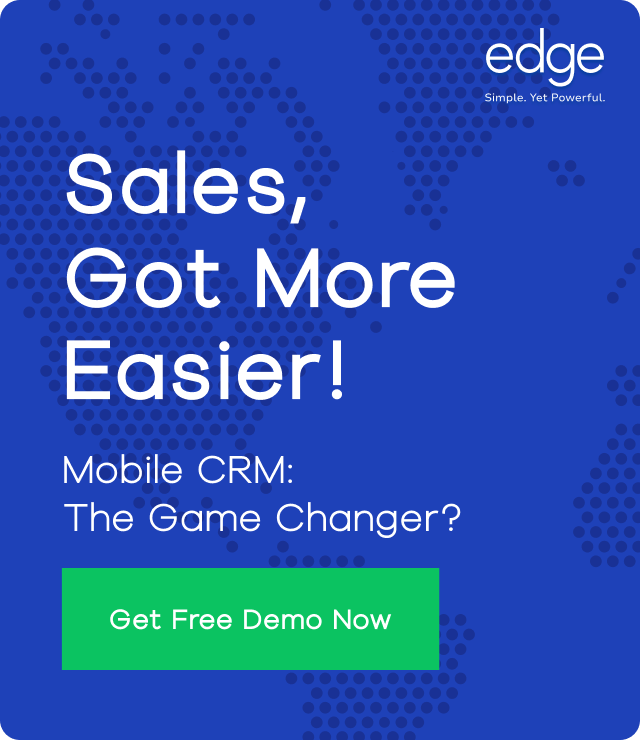by Kadambari Bendre
7 minutes
Data-Driven Marketing in Pharma: Make Informed Decisions Using Analytics
Discover the power of analytics in marketing to make informed decisions and drive growth in pharma industry.

Imagine a patient receiving a personalized reminder about a treatment option or a reminder to follow the regimen, just when they need it most. This isn’t a coincidence; it’s the power of data-driven marketing in pharma at work.
Its 2025, and pharmaceutical marketing no longer relies only on medical representatives; it's a precision tool powered by AI in pharma marketing and real-time insights. Today, data-driven marketing is rewriting the rules of pharma brand success, one insight at a time.
The pharma industry is at the pinnacle of another transformation where a pharma company’s ability to leverage data analytics can make or break its marketing success. Traditional marketing methods have become less efficient as the pharmaceutical industry shifts toward patient-centric care and customer-centric marketing. Instead, data is the priority.
Companies are increasingly taking an analytical approach to optimise their marketing strategies and make informed marketing decisions in hopes of reaching healthcare professionals (HCPs) and customers at the right time, which will improve their relevance in customers’ lives and improve their engagement.
This article discusses the benefits and challenges of data-driven marketing techniques. This article discusses we will the role of data-driven marketing in pharma, AI in pharma marketing and the challenges of data-driven marketing techniques.
What is the role of data-driven marketing in pharma?
It improves decision-making
Data can be used to gain insights into upcoming market trends and patient needs. Pharma companies can improve their strategic decision-making using real-life data instead of intuition or guesswork.
Using data, pharma marketers make evidence-based decisions, resulting in improved resource utilisation, higher engagement, more relevant marketing campaigns, and possibly higher returns on investment.
It improves marketing campaigns

By using customer data, pharma companies can better understand customers' opinions, needs and experiences. This improved understanding of their target customer base will result in well-crafted marketing campaigns that align well with the patient journey.
By continuously analysing available data, marketers can improve their marketing campaigns, optimise marketing budgets and ensure their message is appropriately delivered to the customer.
It allows personalisation
The pharmaceutical industry has already switched towards personalised targeting and messaging. Pharmaceutical companies use available customer data to make informed marketing decisions for personalization in pharma marketing.
For example, companies use data to track the patient’s journey and send personalised messages or information to help the patient. This personalisation improves brand perception, company awareness, and, ultimately, revenue.
It helps build stronger relations with stakeholders
Stakeholders like HCPs, insurers, and pharmacists are among the key target groups of companies because they significantly influence patient decisions.
Data-driven pharma insights can be used to understand better patient behaviour, which can then be used to improve marketing campaigns targeted towards these groups. Consequently, the campaign can provide relevant information to HCPs, establishing the pharma company as a trusted partner.
It helps keep up with competitors
Data can also be used to understand competitor activities and how they fit with current market trends. This understanding can help marketers assess how well their marketing campaigns keep up with competitors and refine them accordingly.
Furthermore, data can be used to identify upcoming trends, and this information can then be leveraged to get ahead of competitors by crafting and publishing campaigns before the opposition.
All this is to say that data-driven marketing significantly impacts a pharmaceutical company’s position in the market. It boosts engagement, customer perception, and brand loyalty. However, pharmaceutical companies have to implement their data-driven marketing techniques appropriately.
How can data-driven marketing in pharma be effectively implemented?
In the pharmaceutical industry, while data-driven marketing strategies vary from one company to another, all of them are built using specific fundamental steps.
Step 1: Importance of Collecting First-Party Data
The growing emphasis on first-party data marks a pivotal shift in marketing, especially in industries like pharma, where trust and compliance are paramount. Unlike third-party data, first-party data collected directly from customer interactions offers superior accuracy, privacy compliance, and targeting potential.
It empowers brands with deeper insights into consumer behavior, preferences, and purchase patterns, enabling the creation of precise customer profiles and real-time, data-driven strategies.
This rich dataset supports hyper-personalized marketing, allowing brands to deliver relevant messages and experiences that drive higher engagement, conversions, and loyalty. Beyond marketing, first-party data enhances the overall customer experience by helping brands identify pain points, anticipate needs, and tailor communications accordingly.
Ultimately, it gives companies a competitive edge by enabling better decision-making, campaign optimization, and product refinement, all rooted in proprietary, trustworthy data.
Step 2: Data analytics and insights
Once the data has been appropriately collected, sorted and labelled, it can be analysed to obtain insights. Data analytics usually involves using machine learning algorithms and artificial intelligence tools to understand data patterns and trends. The goal is to understand patient needs, HCP behaviour and market trends.
The results of this analysis are then used to identify opportunities for growth and untapped customer segments. Insights are also used to make informed marketing decisions regarding current campaigns, such as identifying whether the current campaign should be cut short or extended.

Step 3: Leveraging AI-powered customer insights
With AI customer insights, pharma companies can collect, study and make use of customer preferences, views, needs and actions. Brands can do pharma market research and gain information to take consumer-focused actions, such as showing targeted ads.
Through AI, we can get a more in-depth understanding of customers in less time, along with what they need from the brand and product lines. Based on the data, AI helps forecast patient behavior, market demand, or a physician's prescribing a specific drug, enabling proactive planning.
AI and machine learning in pharma are used for data analytics in the pharmaceutical industry to break down big sets of data to place HCPs or patients in different groups based on therapy areas and past interactions.
Step 4: Hyper-personalization strategies
Once data analysis is complete, the next step is to develop data-driven pharma marketing techniques. This involves mapping the patient journey based on insights obtained from current data.
Next, personalised messages and marketing campaigns are developed to better fit the different phases in the patient’s journey. Personalization goes beyond just emails, it spans websites, mobile apps, webinars, virtual reps, and even patient reminder tools.
Marketers leverage data to divide their audience into smaller segments and identify the needs of each segment. Next, appropriate campaigns are designed and executed for each segment to ensure the highest conversion.
Personalised targeting does not always mean sending a personalised message to each individual. Instead, it means creating messages that resonate the most with each segment. For pharmaceutical brands, hyper-personalization is no longer optional; it’s a competitive differentiator that drives trust, relevance, and ultimately better health outcomes.
Step 5: Analyse Key Performance Indicators
Once marketing campaigns are run, the data generated is collected and analysed to determine the campaign's success. In this sense, the campaign is not divided into “successful” or “failure”.
Instead, data is analysed to understand which segments resonated with the campaign, which segments took action following exposure to the campaign, etc. These key metrics help evaluate how the campaign can be tuned to obtain better responses.
These fundamental steps make up data-driven marketing in pharma. However, developing a data-driven marketing technique is not as straightforward.
What are the common data-driven marketing challenges?
The key fundamental of data-driven marketing techniques is, as expected, data. But, data poses several challenges.
You need the right data
Today, data is abundant. For example, smart wearables generate 2-5 GB of data per day. However, not all this data is relevant. In fact, not all this data will help make business decisions, and managing all of this data is time-consuming and expensive.
Therefore, pharma companies need to build strategies to obtain the right data. Data can be divided into first-party, second-party and third-party data.
Companies obtain First-party data by directly interacting with customers and HCPs. Second-party data is usually purchased from other businesses; third-party data is any other data obtained from outside these two. Companies need to use second- and third-party data to obtain the right kind of data to validate first-party data.
You need to analyse data properly
After obtaining the data, it needs to be properly analysed. The primary aim of data analysis shouldn’t be to validate an existing hypothesis; instead, it should be used to understand customer behaviour and needs.
The obtained data should be analysed to fill in the knowledge gaps about the patient journey. For example, data can be used to identify when patients may opt out of a treatment or why they may ignore medical advice.
Data analysis does not always require expensive, high-tech tools. Instead, it requires tools that can appropriately serve their purpose. There’s little point in having a high-tech machine learning algorithm if it cannot help fill the knowledge gaps or identify current market trends.
You need to use data appropriately
Once data has been obtained and analysed, it should be used properly. This means when a specific idea or pattern has been identified, it should be appropriately leveraged to create a marketing move.
This is the core of data-driven pharma marketing techniques. Ignoring these insights will have no benefits. Therefore, even after obtaining the data, the marketer must ensure it is used appropriately when building campaigns. Poor use of data can lead to campaigns that do not align with patient needs.
An even bigger challenge: You need to ensure regulatory compliance throughout.

These are three smaller—or rather, subsections—of challenges. The more significant challenge is maintaining regulatory compliance throughout the process. There are strict regulatory guidelines on data privacy and use. Pharma companies need to obtain explicit consent to use any patient data. Furthermore, they must scrub data once the consent period is over.
These guidelines apply to second and third-party data, making data collection, management, and use more complicated because when the company fulfils all the requirements, the data may no longer be relevant. AI in Regulatory Compliance in Pharma is emerging as a powerful solution to manage and automate such complex requirements.
Bottom Line
As pharma companies shift toward data-driven marketing techniques to boost their decision-making and personalisation, they face several challenges. This article has briefly highlighted some of the difficulties with shifting toward making informed marketing decisions.
However, these challenges are expected to be more augmented in the future, primarily because data protection and privacy guidelines are yet to be established in many parts of the world.
As these guidelines are implemented and strictly followed, companies may find collecting, managing, and using patient data challenging. As we stand on the pinnacle of another change, we only have to wait to see how the pharmaceutical industry will adapt to this new challenge.
FAQs
1. What is data-driven marketing in pharma?
Data-driven marketing is the use of data and analytics to make informed decisions regarding marketing strategies and campaigns.
2. What type of data is used by pharma companies?
Pharma companies often use patient behaviour data, HCP preferences, HCP prescription patterns, market data, sales/revenue data, and social media engagement data to develop their data-driven marketing strategies.
3. Are there rules regulating the use of patient data?
Yes. Pharmaceutical companies must adhere to strict guidelines such as the General Data Protection Regulation in Europe and the Health Insurance Portability and Accountability Act in the United States. Many other countries have additional or different regulatory bodies and guidelines.
4. How do pharma brands use CRM and analytics?
Pharma brands use CRM (Customer Relationship Management) systems to track and manage interactions with healthcare professionals (HCPs), patients, and other stakeholders. CRM helps organize data from sales reps, digital campaigns, and medical events. Analytics is then applied to this data to segment audiences, measure engagement, optimize campaigns, and personalize communication, leading to better targeting and stronger relationships.
5. What role does AI play in pharma marketing?
AI enhances pharma marketing by delivering predictive insights, content personalization, and real-time decision-making. It helps identify the right audience, forecast behavior (e.g., prescription trends), and optimize messaging across channels. AI also powers chatbots, natural language processing, and sentiment analysis to improve customer engagement and automate routine tasks efficiently.




